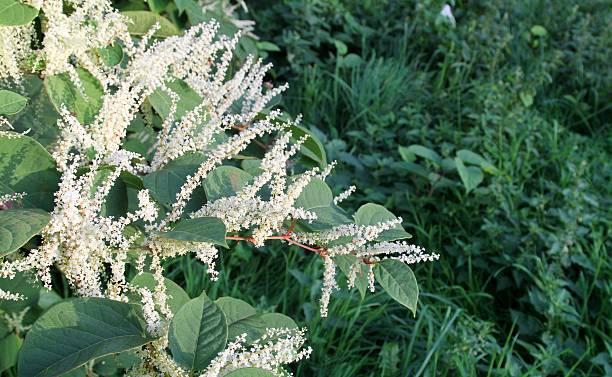Recently, I read with interest about a vendor who had failed to declare that his house had Japanese knotweed behind the garden shed. He was sued by the purchaser leaving him with a £200,000 bill after he denied the plant was growing in the garden. The vendor had answered ‘no’ to the question on the TA6 property information form asking if the property had been affected by knotweed at the property when he sold it.
Japanese knotweed is hell bent on:
- Destruction – it can damage property by growing through asphalt, destroying walls and underground drains. The rhizomes can grow as deep as three metres underground and spread over 7 metres from the visible part of the plant.
- Dominance – it spreads rapidly , being present in nearly every 10sq km of the UK
- Survival – it is extremely difficult to kill and can even shrug off many so called ‘professional’ attempts
The UK Environment Agency describes Japanese knotweed as ‘indisputably the UK’s most aggressive, destructive and invasive plant’ that is notorious for its propensity to spread and cause damage to building structures, as well as the difficulty and expense of getting rid of it - and unfortunately it can have a drastic effect on residential property sales, so what do you need to know about this troublesome plant.
- Identify whether the knotweed is present on the property or the adjoining property. if it is, find out the scale of the problem. You may think it is just a sprig or two, but it is knowing the mass of the underground rhizome system that is important
- How do you tell if it is knotweed? Fully grown by early summer the canes can be identified by their distinctive purple speckle. Towards the end of summer, clusters of small white flowers appear which are loved by insects for their nectar. In autumn, the leaves wither. The rhizome is the part of the plant that is submerged with dark brown bark and under this external layer, it is orange or yellow
- Understand the liabilities that you’ll be taking on – as the new owner you will need to know if the knotweed has encroached from or onto the land you are looking to acquire? If it has, then the first discussion with your new neighbours may not be as friendly as you had hoped. If it has encroached from your land then you may be at risk of a legal claim in ‘private nuisance’ from your new neighbour.
- Will the property provide suitable security for lending purposes? – if the property is affected by Japanese knotweed, some lenders may reject outright, others may take a more pragmatic view and lend if the knotweed is being eradicated by a reputable firm and where appropriate insurance backed guarantees are provided
- Does anyone have a duty to disclose the presence of Japanese knotweed to buyers? – the seller has an obligation to disclose the presence of knotweed during pre-contract enquiries made by your solicitor. The Estate Agent does have an obligation under consumer protection regulations to advise you of any material facts that would affect your decision to buy – the guidance to these regulations identifies Japanese Knotweed as being ‘material’.
- If the property is identified as affected by knotweed should you pull out of the sale? – understand what you are taking on and is it reflected in the price you are paying. Don’t fall into the trap of letting the seller ‘sort out’ the problem, as a cheap attempt at eradication with inadequate guarantees is unlikely to work.
If you are selling a property and unsure of the position around knotweed then call David Phillip FRICS for further advice, and if you require a free market appraisal then call us on 01134 676 400. A: 86, Leeds Road, Bramhope, Leeds www.davidphillip.co.uk
Covering Leeds, Bramhope, Pool-in-Wharfedale, Adel, Cookridge and Otley





